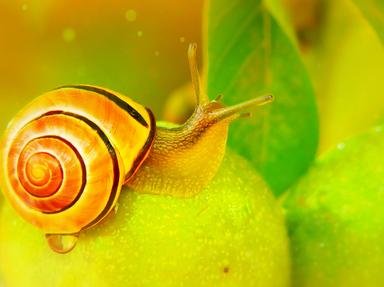Quiz Answer Key and Fun Facts
1. These tiny (0.5-1.5 mm long), ecdysozoan animals are sometimes called water bears. They have fleshy, unjointed legs and use their fluid-filled body cavities as a hydrostatic skeleton.
2. This phylum consists of 320 species of unsegmented, extremely thin worms that range from a few millimeters up to 1 meter in length. Their larvae are internal parasites of crayfish and insect larvae. The infested adult insect's behaviour is altered so that it jumps into the water and dies as the worm emerges!
3. Which of these is a worm that makes a hole in the body of its prey with a hollow, muscular proboscis?
4. These ecdysozoan worms have segmented bodies chitin covered bodies, fleshy antennae and many soft, fleshy, unjointed saclike legs with claws.
5. Which of these is a basal animal made of just two layers of cells and looks like scum stuck to the aquarium glass? It's also only 1 mm in diameter.
6. Which of these are marine, unsegmented flatworms that do not have a body cavity and therefore were once thought to be Platyhelminthes? They do not have an anus or hindgut, either.
7. Which of these is a bottom-dwelling, marine, tiny animal that has a corset?
8. Which of these are "moss animals" that live in "clone" colonies and have an exoskeleton?
9. Which of these are known as arrow worms and are the second most abundant contributor to zooplankton and biomass in the southern oceans?
10. Which of these is a basal bilaterian phylum with only two species, the first one being discovered only in 1915 by Sixten Bock.
Source: Author
Biainburi
This quiz was reviewed by FunTrivia editor
Tizzabelle before going online.
Any errors found in FunTrivia content are routinely corrected through our feedback system.

